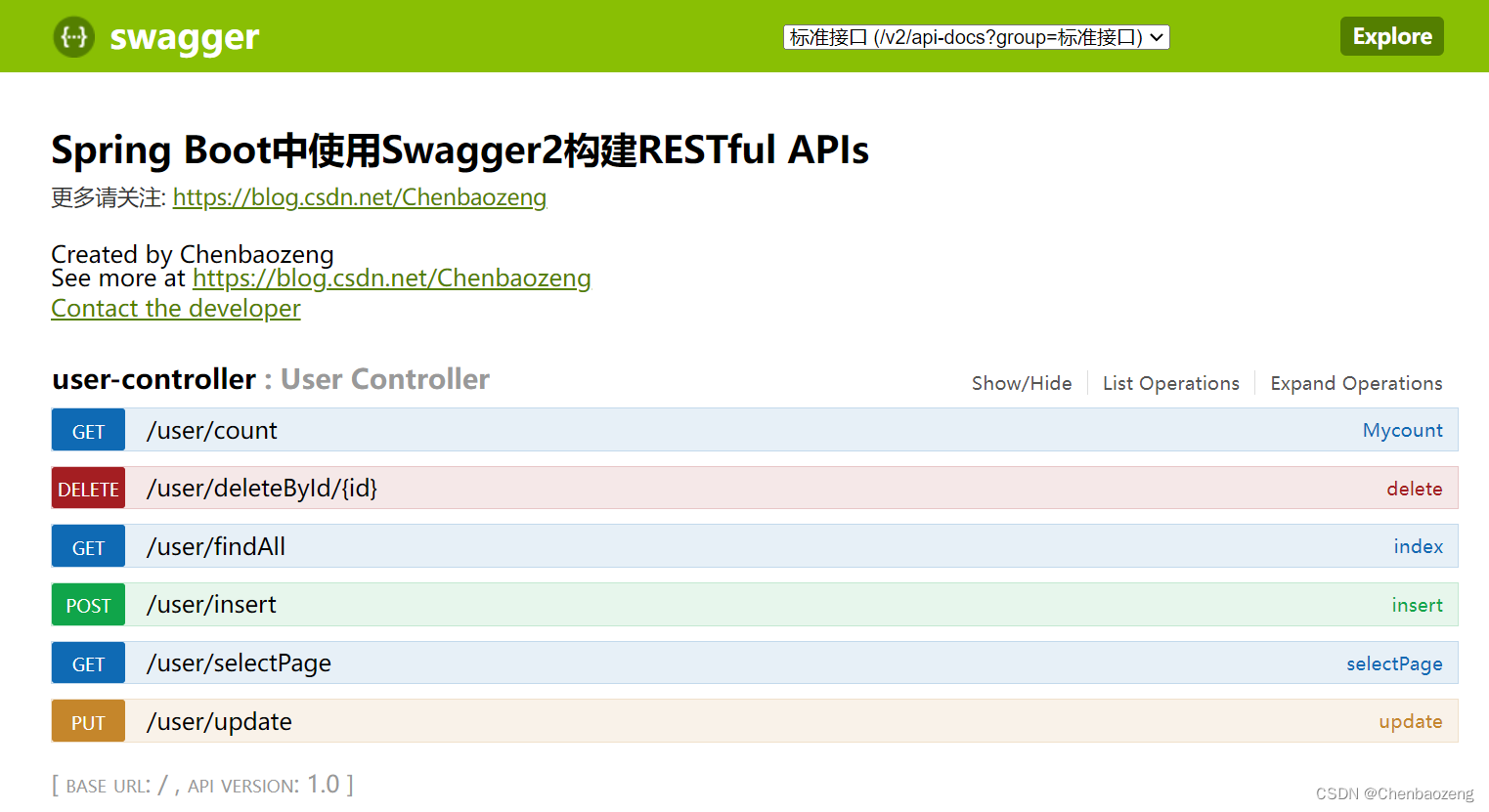SwaggerUI可以方便我们测试接口,我们一般使用postman来测试,说麻烦也不麻烦,但是springboot为了实现技术垄断,给我们加了这个一个接口测试的方法!
第一步,添加依赖pom
<!--swagger-->
<dependency>
<groupId>io.springfox</groupId>
<artifactId>springfox-swagger2</artifactId>
<version>2.7.0</version>
</dependency>
<dependency>
<groupId>io.springfox</groupId>
<artifactId>springfox-swagger-ui</artifactId>
<version>2.7.0</version>
</dependency>第二步,填写配置类信息
import org.springframework.context.annotation.Bean;
import org.springframework.context.annotation.Configuration;
import springfox.documentation.builders.ApiInfoBuilder;
import springfox.documentation.builders.PathSelectors;
import springfox.documentation.builders.RequestHandlerSelectors;
import springfox.documentation.service.ApiInfo;
import springfox.documentation.service.Contact;
import springfox.documentation.spi.DocumentationType;
import springfox.documentation.spring.web.plugins.Docket;
import springfox.documentation.swagger2.annotations.EnableSwagger2;
@Configuration
@EnableSwagger2
public class SwaggerConfig {
/**
* 创建API应用
* apiInfo() 增加API相关信息
* 通过select()函数返回一个ApiSelectorBuilder实例,用来控制哪些接口暴露给Swagger来展现,
* 本例采用指定扫描的包路径来定义指定要建立API的目录。
*
* @return
*/
@Bean
public Docket restApi() {
return new Docket(DocumentationType.SWAGGER_2)
.groupName("标准接口")
.apiInfo(apiInfo("Spring Boot中使用Swagger2构建RESTful APIs", "1.0"))
.useDefaultResponseMessages(true)
.forCodeGeneration(false)
.select()
.apis(RequestHandlerSelectors.basePackage("com.cbz.springboot.controller"))
.paths(PathSelectors.any())
.build();
}
/**
* 创建该API的基本信息(这些基本信息会展现在文档页面中)
* 访问地址:http://ip:port/swagger-ui.html
*
* @return
*/
private ApiInfo apiInfo(String title, String version) {
return new ApiInfoBuilder()
.title(title)
.description("更多请关注: https://blog.csdn.net/Chenbaozeng")
.termsOfServiceUrl("https://blog.csdn.net/Chenbaozeng")
.contact(new Contact("Chenbaozeng", "https://blog.csdn.net/Chenbaozeng", "2498716018@qq.com"))
.version(version)
.build();
}
}
到了这步基本就可以了,大家可以启动一下项目!
如果发现报错了`Failed to start bean ‘documentationPluginsBootstrapper‘`那么就需要在application.yml文件中添加
spring:
mvc:
pathmatch:
matching-strategy: ant_path_matcher #swggweUI报错了就加这个那么接下来就应该可以了(还报错的话,依赖换一个版本试试!)
项目运行地址:http://localhost:8080/swagger-ui.html

打开就是一个类似这样的页面,里面可以对我的写的接口进行测试啦!!!
(Swagger3)pom.xml
<dependency>
<groupId>io.springfox</groupId>
<artifactId>springfox-boot-starter</artifactId>
<version>3.0.0</version>
</dependency>
<dependency>
<groupId>com.github.xiaoymin</groupId>
<artifactId>swagger-bootstrap-ui</artifactId>
<version>1.9.6</version>
</dependency>启动类:
其实就是在上面添加一个注解
EnableOpenApi
好了,以上就是springboot集成swagger的方法,快去试一试吧!!!




















 736
736











 被折叠的 条评论
为什么被折叠?
被折叠的 条评论
为什么被折叠?








